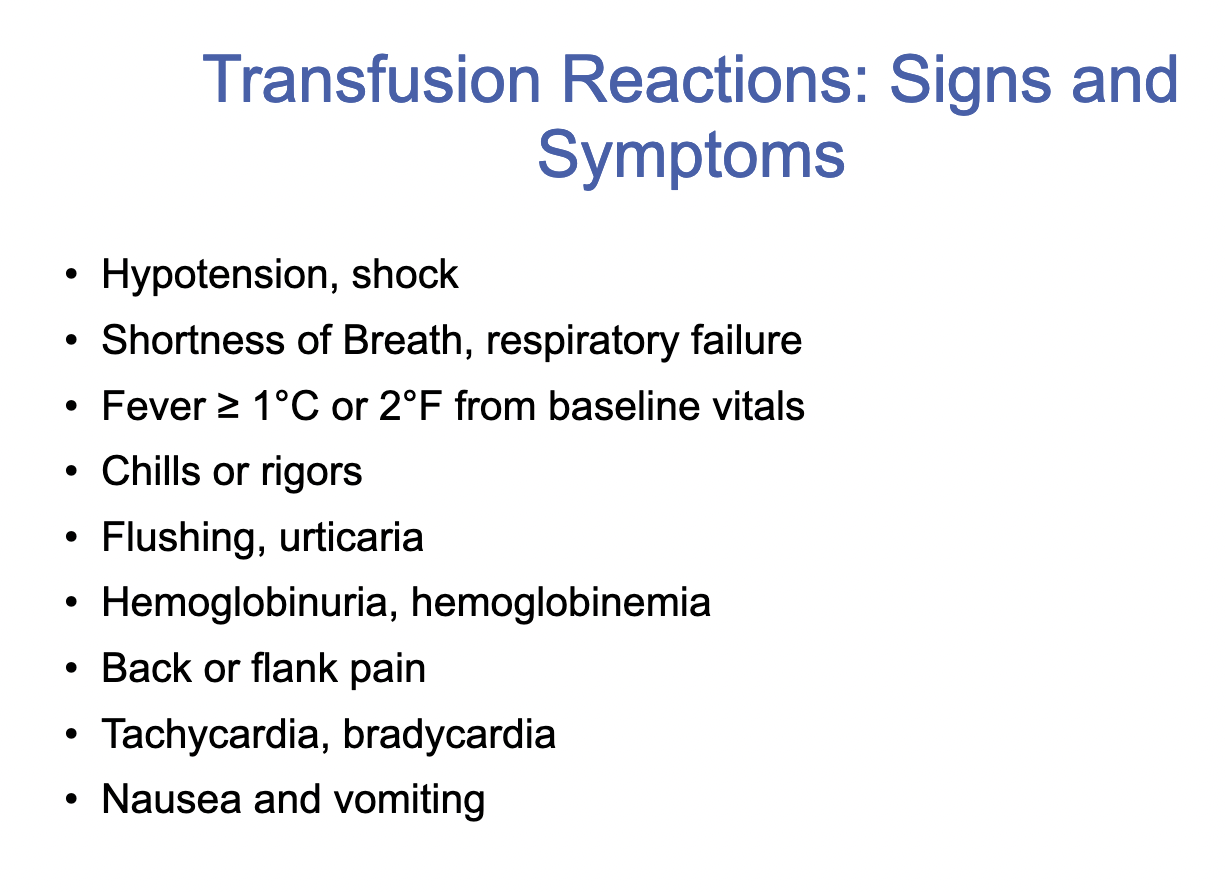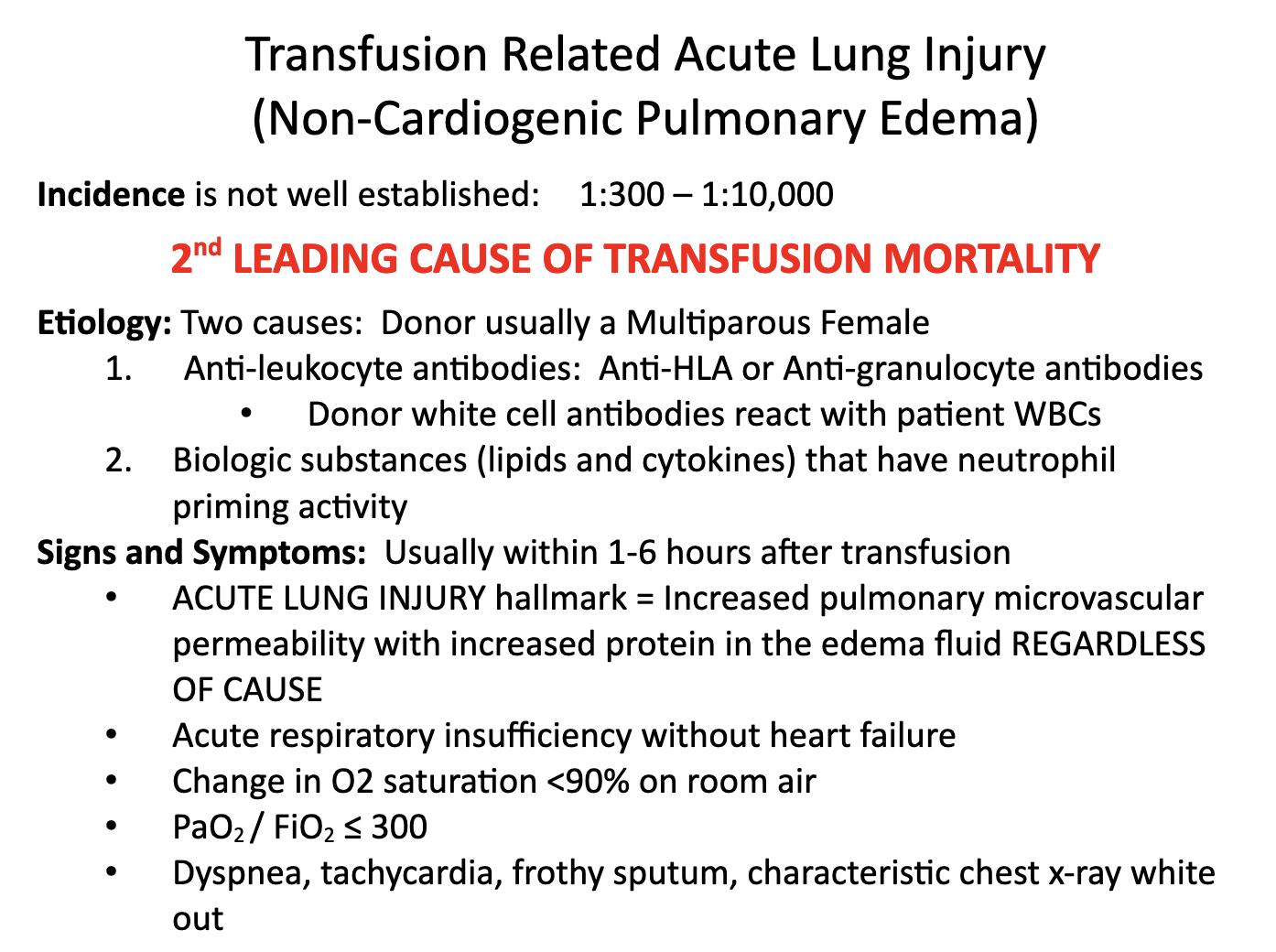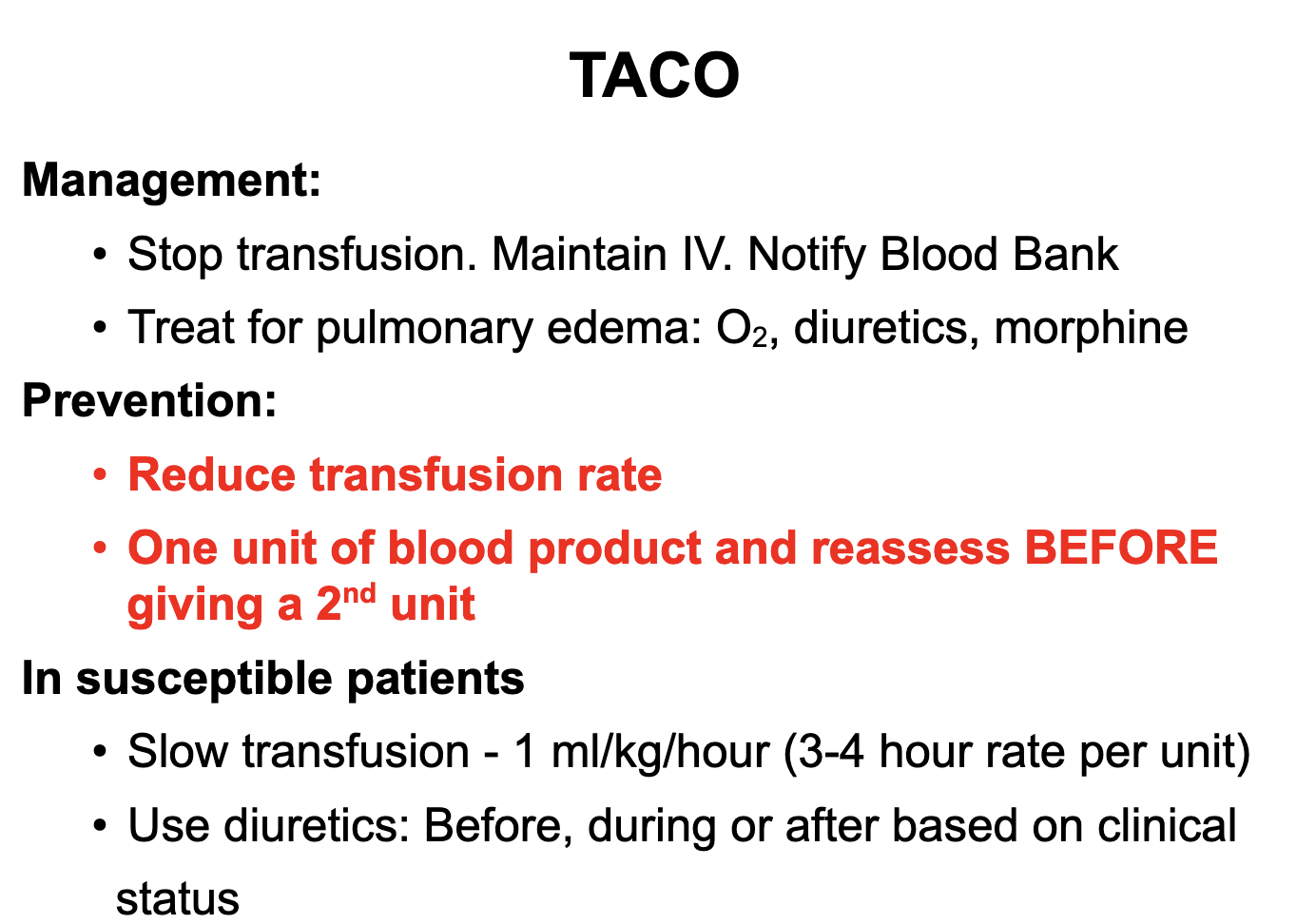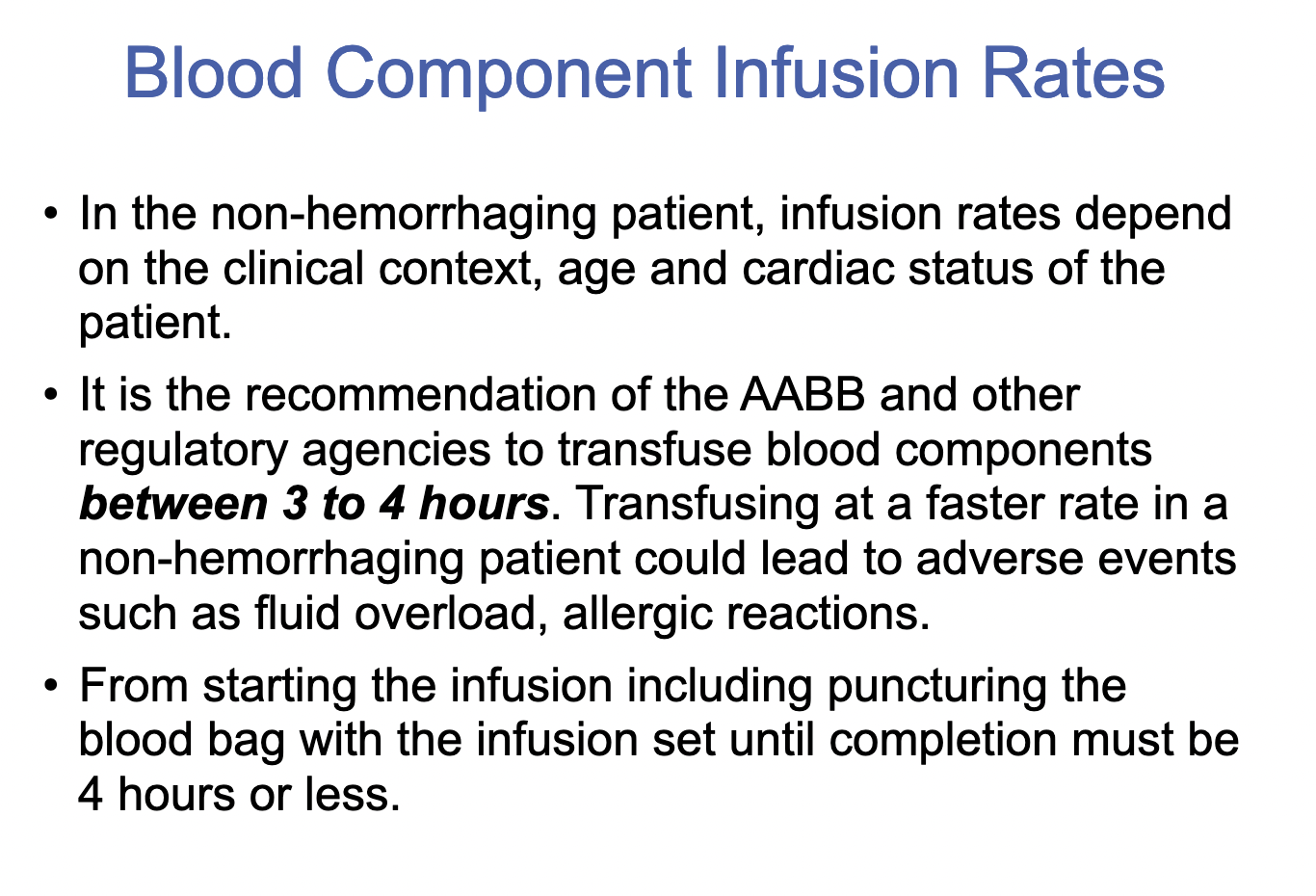transfusion reaction
- related: transfusion medicine
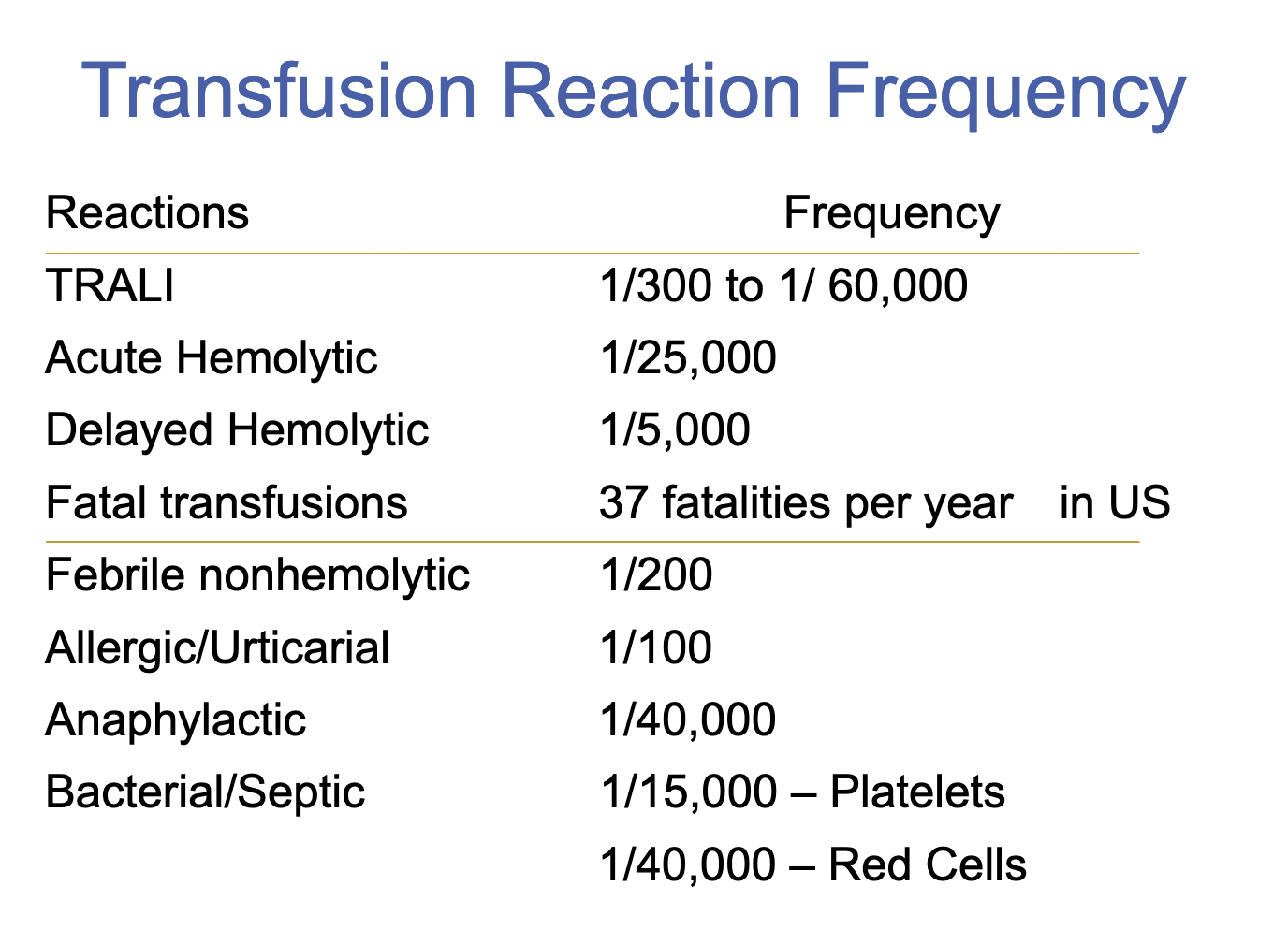
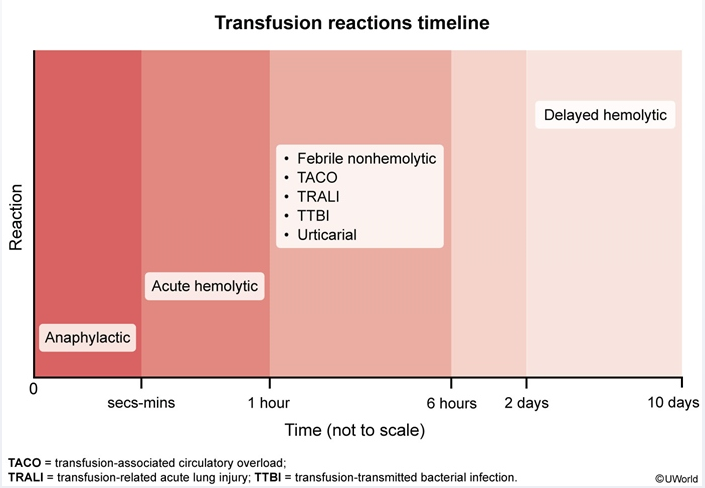
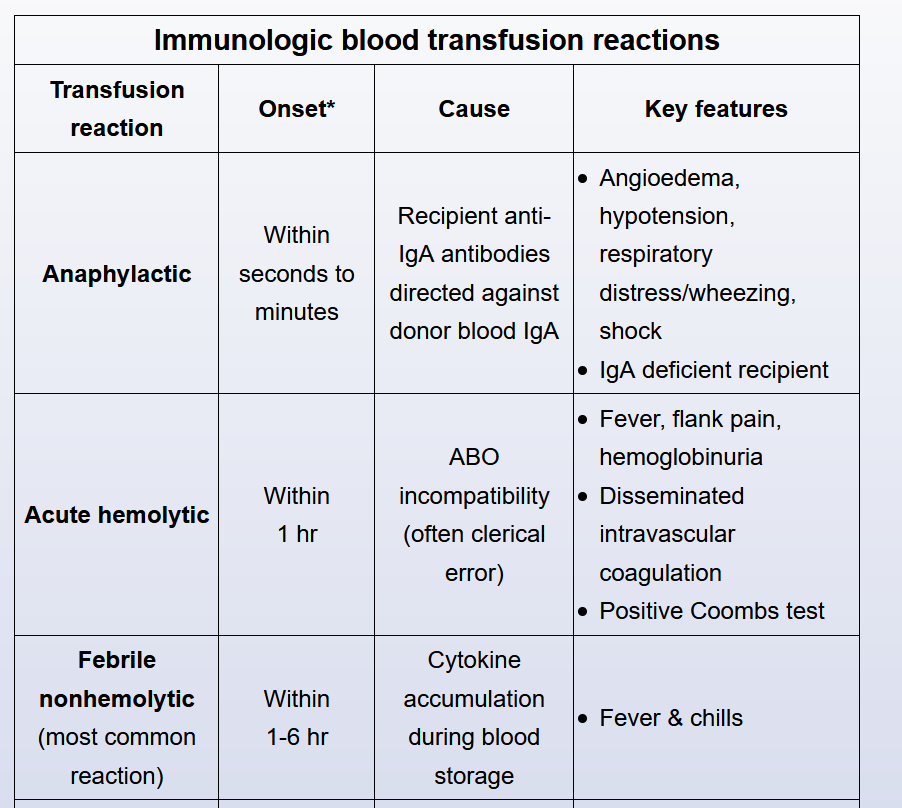
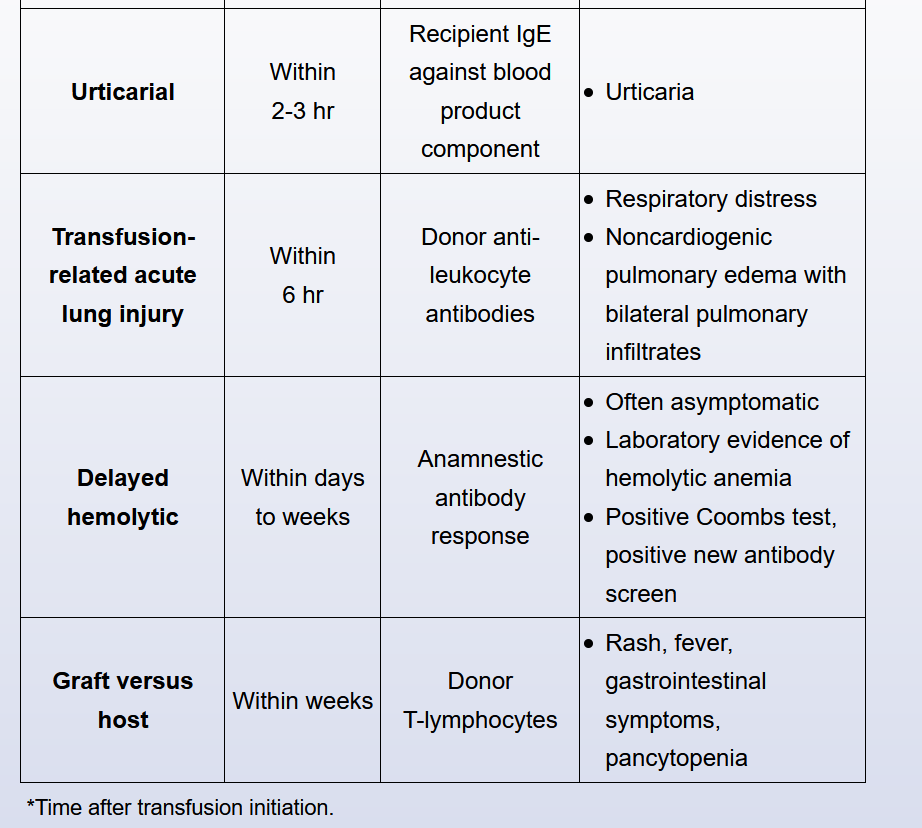
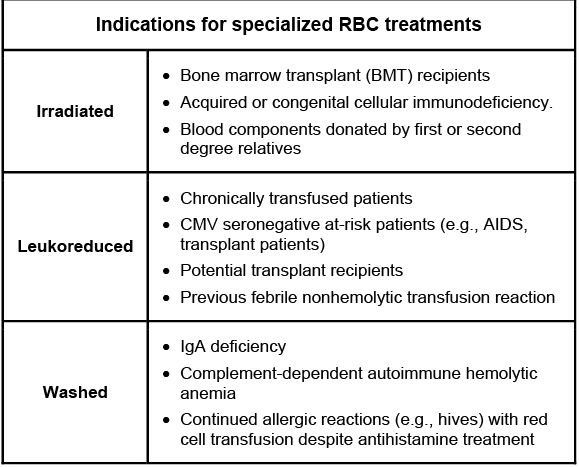
Leukoreduction involves reducing the number of transfused leukocytes through filtering or other methods such as saline washing, freezing and deglycerolizing, or buffy coat removal. It also reduces the risk of human leukocyte antigen alloimmunization and transmission of cytomegalovirus (which typically resides in leukocytes). Premedication with antipyretics and antihistamines has not been shown to significantly reduce transfusion reactions.
Residual plasma in red cell concentrates contains proteins, including immunoglobulin A (IgA). IgA-deficient patients develop antibodies against IgA. These antibodies can react with IgA-containing donor products and induce an anaphylactic reaction (angioedema, hypotension, and respiratory distress) that can progress rapidly to loss of consciousness, shock, and respiratory failure. To reduce this risk, red cells should be washed to remove as much of the plasma as possible for patients with IgA deficiency or prior allergic transfusion reaction.
Transfusion reaction
This patient is likely having an acute hemolytic transfusion reaction (AHTR), which typically develops within an hour after the transfusion is started. AHTR is a medical emergency usually caused by ABO incompatibility (possibly due to clerical error) or presence of other antibodies. Patients who require chronic red cell transfusions (eg, African American patients with sickle cell anemia) may form multiple antibodies to common Rh, Kell, or other blood group antigens.
Patients typically present with fever, chills, hemoglobinuria, flank pain, and discomfort at the infusion site. This may advance to renal failure (due to immune complex deposition) and disseminated intravascular coagulation (DIC). Diagnosis is made by a positive direct Coombs test, pink plasma (plasma free hemoglobin >25 mg/dL), hemoglobinuria, and repeat type and cross-match showing a mismatch.
AHTR should be managed by immediately stopping the transfusion and aggressively hydrating the patient with normal saline (not Ringer's or dextrose) to treat the hypotension and prevent renal failure.

